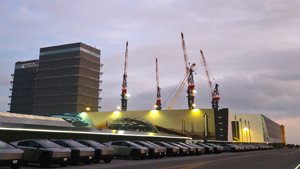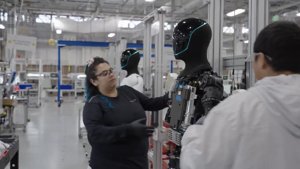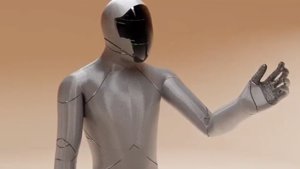In the rather theatrical arena of tech crystal-ball gazing that was Web Summit 2025, Uber, Inc. COO Andrew Macdonald didn’t pull any punches when it came to the future of robotaxis. Chatting with Bloomberg News’s Craig Trudell, Macdonald slapped down a rather stringent benchmark for our future silicon chauffeurs: the AI, he declared, needs to be “10x better than humans” before it’s even remotely ready for its big debut. This isn’t merely about swapping a squishy human for a cold, hard processor; it’s about a fundamental, almost quantum, leap in safety and reliability that the industry is still desperately scrambling to achieve.
Macdonald, ever the pragmatist, was swift to highlight the veritable Everest of obstacles lurking well beyond just the AI itself. The economics of owning and operating a massive fleet of autonomous vehicles, you see, is a completely different kettle of fish – and a brutally expensive one at that – compared to its current, rather nimble, asset-light model. Concerns over asset ownership, the sprawling charging infrastructure needed, and the sheer headache of maintenance represent a logistical nightmare so epic it makes managing a global network of human drivers look like a stroll in the park. It’s a rather bracing splash of cold water for anyone naively expecting a seamless, overnight transition to fleets of driverless chariots zipping through our cities.
Having, shall we say, taken a few rather costly tumbles during its own ambitious AV development escapades, Uber’s new playbook is now all about the savvy art of strategic partnerships. Macdonald proudly trumpeted the company’s collaboration with Waymo in Texas, pointing out that the autonomous vehicles in that particular fleet are being put to work more than 99% harder than their human-driven counterparts. This rather impressive efficiency, he explained, is fuelled by deep-seated collaborations with the likes of Nvidia, whose automotive platforms and AI wizardry are absolutely critical to making this complex ecosystem tick. Uber’s own role, it seems, is subtly shifting towards becoming a grand data provider and master network operator, diligently feeding real-world usage data from its sprawling ride-sharing empire—and even video data from partners like Lucid—into the ravenous maw of AI development, all to help forge a smarter, slicker AI.
Why is this important?
Uber is, quite shrewdly, making a pragmatic, if perhaps slightly less dazzling, pivot. Instead of attempting to construct the entire autonomous stack from scratch, like some Silicon Valley deity, it’s now cannily positioning itself as the utterly indispensable platform, the digital glue, connecting myriad robotaxi technologies to its colossal customer base. By merely providing the network and the lifeblood of data, and wisely letting hardware and AI specialists like Nvidia and Waymo wrestle with the truly Herculean task of actually developing the self-driving contraptions, Uber aims to firmly grip the reins of the customer relationship and all the intricate operational logistics. It’s a rather telling, if unspoken, admission that the yellow brick road to a robotaxi future is simply too long and too ridiculously pricey to traverse solo. And, perhaps more importantly, that the real pot of gold might just be found in selling the treasure maps, not in forging the chariots themselves.






